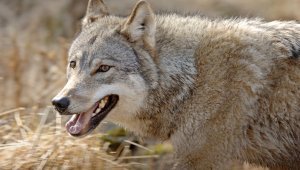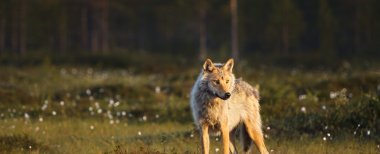wolf (Canis lupus)
The wolf (Canis lupus) is a mammal of the canine family. Biologically speaking, it is the same species as the domestic dog. The wolf is the largest canine living in the wild. Out of all the northern predators, the wolf is the most social species that prefers to live in packs formed by family units. Wolves communicate with each other via postures, gestures, facial expressions, scent marks and howling. Contrary to what stories tell us, the wolves do not howl more than usual during the full moon. Wolves howl to signal the beginning of hunt, to guard their territory and to call the pack together.
Applications for the hunting of 48 wolves
Mon Jan 12 13:23:00 2015
According to the draft regulation made by the Ministry of Agriculture and Forestry, population-based licenses could be granted for the hunting of max. 29 wolves. The Finnish Wildlife Agency will assess and examine the case-specific grounds for the granting of licenses. Decisions concerning the received applications can be made after the regulation enters into force.
The EU’s Habitats Directive enables the population-based hunting of large carnivores on the conditions that the game species has a management plan and that the hunting will not weaken the obtainment of the protection level – and if there is no other satisfactory solution to the conflict. Until now, population-based hunting in Finland has concentrated on lynxes and bears, reducing conflicts caused by them. The hunting of wolves will be implemented as a two-year trial, where the effects of hunting on the wolf population, wolf pack structure and people’s attitudes will be closely examined.
Wolf tracks
The wolf leaves tracks that are typical of large canines. Telling the tracks of a wolf apart from those left by a large dog is very difficult. As is typical of canines, the print left by the wolf's forepaw (10–11 cm) is larger than that left by its hindpaw (9–10 cm). When measuring wolf tracks, the ...

